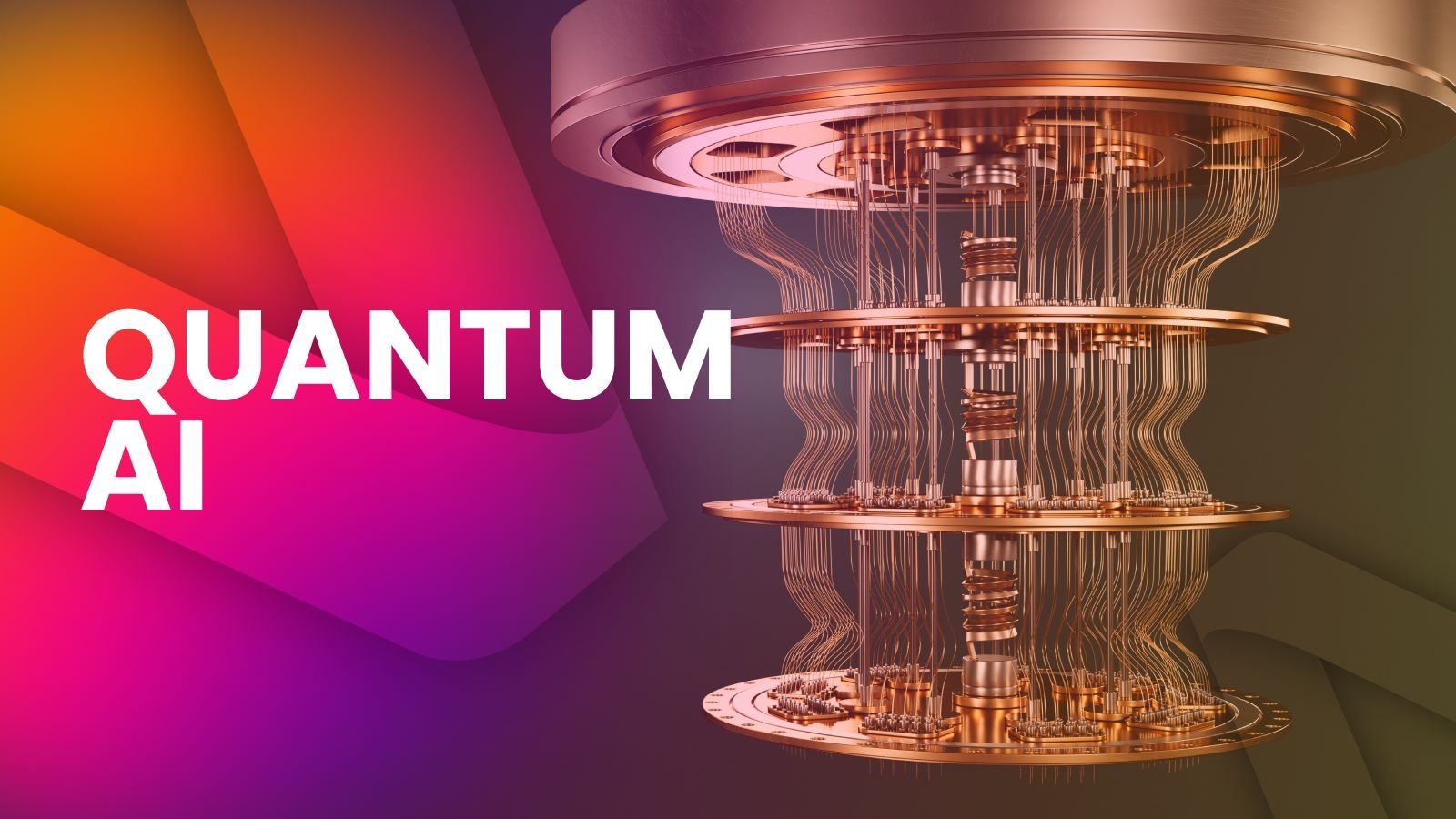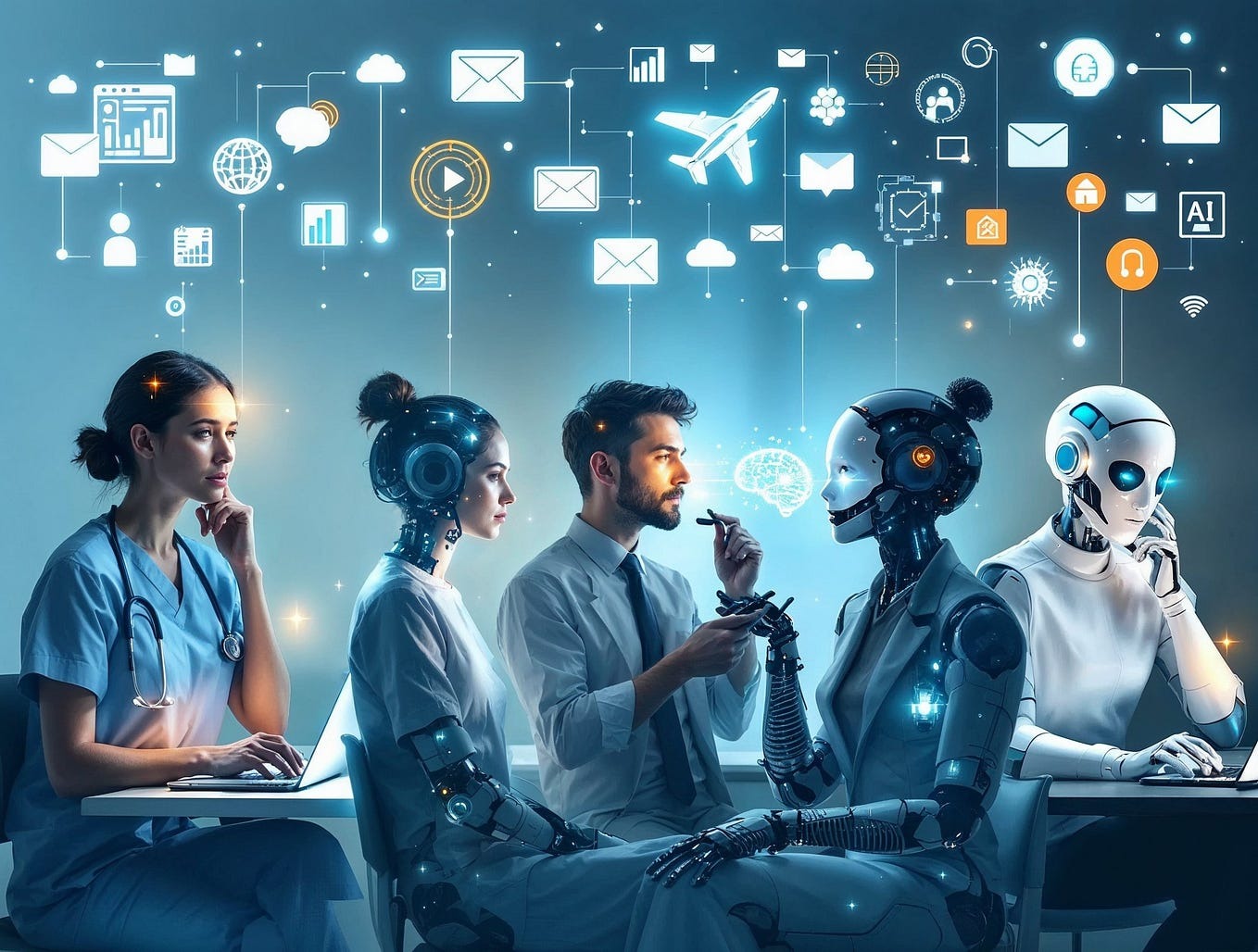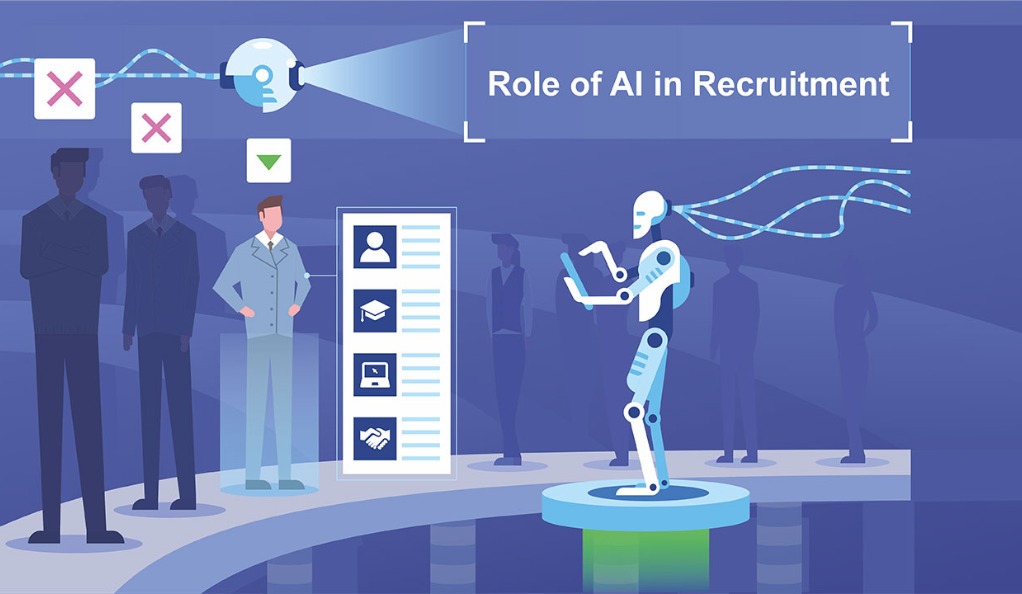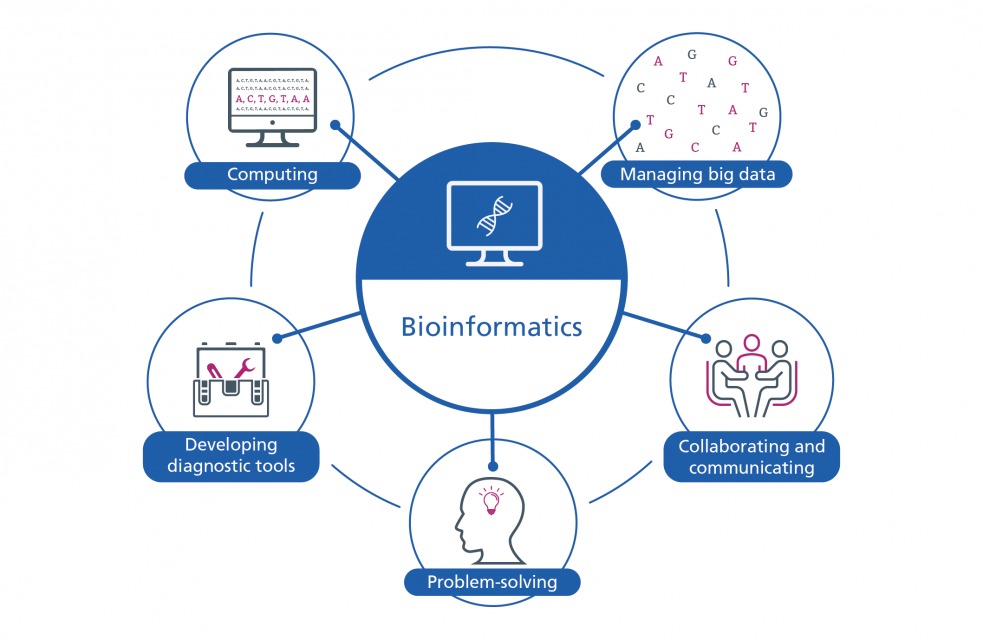
Quantum Computing for Beginners: The Next Internet Revolution.
Quantum computing is set to revolutionize technology like the internet did decades ago. By harnessing qubits, superposition, and entanglement, quantum computers can solve problems far beyond classical systems. From medicine and AI to cybersecurity and climate modeling, this emerging technology promises unprecedented computational power, innovation, and a new era of secure, high-speed global information processing.
✨ Raghav Jain

Quantum Computing for Beginners: The Next Internet Revolution
Imagine a world where computers can solve in seconds what would take today’s fastest supercomputers thousands of years. That world is closer than you think, thanks to quantum computing. Often hailed as the next Internet revolution, quantum computing is set to redefine how we process information, create new materials, develop drugs, enhance cybersecurity, and even understand the universe itself.
But what exactly is quantum computing, and why is it considered so revolutionary?
At its core, quantum computing is a new paradigm of computation based on the principles of quantum mechanics—the science that governs the behavior of matter and energy at atomic and subatomic scales. To understand it, let’s start by comparing it to the computers we use today.
Traditional computers, whether your smartphone or NASA’s most advanced supercomputer, operate on binary logic. They use bits—tiny electronic switches that can be in one of two states: 0 or 1. Every image, sound, and piece of text is ultimately represented by long sequences of these bits. The problem is that as data grows exponentially and problems become more complex, classical computers hit physical and computational limits.
Enter the quantum computer, a device that leverages the weird, counterintuitive laws of quantum physics to perform calculations in ways classical machines never could.
1. Qubits: The Building Blocks of Quantum Power
Instead of bits, quantum computers use qubits (quantum bits). A qubit can exist as 0, 1, or both 0 and 1 simultaneously—thanks to a quantum phenomenon called superposition. This means that, unlike a regular bit that represents a single value, a qubit can represent multiple values at once.
To visualize this, imagine flipping a coin. While the coin is spinning, it’s both heads and tails at the same time—only when it lands do we observe a definite state. Similarly, a qubit exists in multiple states until measured. When multiple qubits are entangled—a property called quantum entanglement—their states become linked, allowing an exponential increase in computational power.
A classical 3-bit computer can represent only one of eight (2³) possible combinations at a time, but a 3-qubit quantum system can represent all eight simultaneously. Scale that to 300 qubits, and you have a system capable of representing more states than there are atoms in the observable universe.
2. Quantum Entanglement: The Power of Connection
Entanglement, described by Albert Einstein as “spooky action at a distance,” allows qubits to be interconnected so that the state of one instantly affects the state of another, regardless of distance. This interdependence allows quantum computers to perform multiple parallel calculations and solve highly complex problems in mere seconds.
3. Quantum Interference: Controlling the Outcome
Quantum interference ensures that only the correct paths of computation reinforce each other while incorrect ones cancel out. In other words, it allows quantum computers to “amplify” the right answer and suppress the wrong ones—a process crucial for problem-solving accuracy.
4. Quantum vs Classical: A Practical Example
To see the difference in action, consider Shor’s Algorithm, developed by mathematician Peter Shor. It can factorize large numbers exponentially faster than any known classical algorithm. This is particularly important because most modern encryption systems (like RSA) rely on the difficulty of factoring huge numbers. A sufficiently powerful quantum computer could, in theory, break these cryptographic systems within minutes—something that’s impossible for classical computers.
Similarly, Grover’s Algorithm can search an unsorted database much faster than traditional methods, further demonstrating quantum computing’s immense potential.
The Quantum Revolution: Why It’s Called “The Next Internet” (Approx. 1000 words)
The impact of quantum computing could be as transformative as the internet’s introduction in the 1990s. Just as the internet connected humanity and unleashed a wave of innovation, quantum computing will redefine industries and scientific frontiers.
Let’s explore how.
1. Medicine and Drug Discovery
Pharmaceutical development today relies heavily on simulations of molecular interactions—a process that classical computers struggle with because molecules behave quantum mechanically. Quantum computers, operating on the same principles, can model these interactions precisely. This could lead to rapid development of new drugs, personalized medicine, and treatments for diseases like Alzheimer’s, cancer, and Parkinson’s.
For example, researchers at IBM and Google are exploring quantum simulations to design better catalysts for chemical reactions—potentially revolutionizing medicine and energy industries.
2. Artificial Intelligence and Machine Learning
Quantum computing promises to supercharge artificial intelligence. Machine learning models, which currently require massive data and computational resources, could be trained much faster using quantum algorithms. Quantum AI could enable real-time pattern recognition, optimization, and prediction across fields like finance, weather forecasting, cybersecurity, and even creative arts.
3. Cybersecurity: A Double-Edged Sword
Quantum computing poses both a threat and a solution to cybersecurity. As mentioned earlier, quantum computers could break classical encryption systems, making today’s internet security obsolete. However, they could also enable quantum encryption—specifically, quantum key distribution (QKD)—which is theoretically unhackable due to the laws of physics. If someone tries to intercept quantum keys, the act of measurement itself changes the data, alerting both parties to the intrusion.
This means a future where communications—banking, defense, healthcare—are secured at a level far beyond anything achievable today.
4. Climate Modeling and Environmental Science
Simulating global climate systems is computationally immense. Quantum computers could analyze countless interacting variables simultaneously, leading to more accurate climate predictions, efficient carbon capture technologies, and optimized renewable energy systems. Companies like Microsoft and D-Wave are already researching quantum models for sustainability challenges.
5. Financial and Economic Optimization
Financial markets are complex, with millions of variables affecting outcomes. Quantum computing can process these enormous datasets, optimize investment strategies, detect fraud, and predict market trends faster than any traditional system. Banks like JPMorgan Chase and Goldman Sachs are already investing heavily in quantum research for this very reason.
6. Logistics and Transportation
From airline routes to supply chain management, optimization problems are everywhere. Classical computers approximate solutions, but quantum computers can find the most efficient routes or schedules by evaluating all possibilities at once. This could save companies billions while reducing fuel use and emissions.
7. Quantum Internet: The Next Communication Frontier
Perhaps the most exciting development is the idea of a Quantum Internet—a global network that transmits information using quantum signals instead of classical data. This would allow ultra-secure communications, instant data synchronization, and distributed quantum computing, where multiple quantum systems work together across distances.
China has already launched quantum communication satellites, and institutions like MIT and Caltech are building quantum networks linking multiple cities. Just as the classical Internet connected the world’s information, the quantum internet will connect the world’s quantum systems.
8. Challenges and Limitations
Despite the hype, quantum computing is still in its infancy. Current machines, known as NISQ (Noisy Intermediate-Scale Quantum) computers, are highly sensitive to temperature, vibration, and electromagnetic noise. Qubits must be kept near absolute zero to remain stable. Moreover, quantum error correction is a major hurdle—tiny disturbances can collapse quantum states, leading to computational errors.
Scaling from tens to thousands of stable qubits remains the biggest engineering challenge. Yet, progress is rapid. IBM, Google, and startups like IonQ and Rigetti are already building systems with 100+ qubits, aiming for fault-tolerant designs by the early 2030s.
9. The Future Outlook
In the next decade, we can expect hybrid systems—where quantum processors work alongside classical supercomputers—to solve specific, high-impact problems. Eventually, as quantum hardware matures and becomes accessible via the cloud (as IBM Quantum Experience already offers), the technology will become as commonplace as cloud computing today.
Just as few could predict the full scope of the internet revolution in the 1990s, we are now standing on the threshold of a new digital era—the Quantum Revolution.
Quantum computing is widely regarded as the next great technological revolution, comparable in scale to the birth of the Internet, and it promises to transform every aspect of our digital and scientific world. At its core, quantum computing is based on the strange yet powerful principles of quantum mechanics—the branch of physics that governs the behavior of matter and energy at the atomic and subatomic levels. Unlike classical computers, which process information using bits that exist as either a 0 or a 1, quantum computers use quantum bits, or qubits, which can exist as both 0 and 1 simultaneously through a property known as superposition. This means that while a classical computer can handle one calculation at a time, a quantum computer can perform multiple calculations simultaneously, unlocking an exponential increase in computational power. Another key quantum concept is entanglement, in which qubits become interconnected so that the state of one instantly influences the state of another, regardless of distance. This “spooky action at a distance,” as Einstein called it, allows for remarkable coordination and speed in computation. In addition, quantum interference ensures that only the correct computational paths are reinforced while the incorrect ones cancel out, making the results more accurate. To illustrate this power, consider that a traditional 3-bit system can represent one of eight possible combinations at any moment, while a 3-qubit system can represent all eight combinations simultaneously. Scale that up to 300 qubits, and you reach a state space larger than the number of atoms in the observable universe. This incredible efficiency is why quantum computing is often described as a paradigm shift rather than a mere evolution of technology. Algorithms like Shor’s Algorithm, which can factor large numbers exponentially faster than classical methods, threaten to render today’s encryption systems obsolete, while Grover’s Algorithm can search vast databases with extraordinary efficiency. Such capabilities are driving governments, tech giants, and research institutions to invest heavily in quantum development, viewing it as both a massive opportunity and a critical strategic priority. The potential applications are nearly limitless. In medicine, quantum computers can simulate molecular interactions at a quantum level, helping scientists design new drugs, understand diseases, and create personalized therapies that classical computers simply cannot model due to their complexity. In artificial intelligence, quantum computing could accelerate machine learning by analyzing massive datasets and optimizing models at unprecedented speeds, enabling breakthroughs in pattern recognition, prediction, and automation. In cybersecurity, the technology poses both risks and solutions: while quantum systems could easily break current encryption protocols like RSA, they can also enable quantum key distribution (QKD), a form of communication security that is theoretically unhackable because any attempt to intercept the quantum key would alter its state, instantly alerting both parties. Financial institutions could use quantum algorithms to model market behaviors, optimize investment portfolios, and detect fraud with unmatched precision, while logistics and transportation could benefit from ultra-efficient route optimization, saving billions in time, fuel, and resources. Even climate modeling and energy systems could be revolutionized, as quantum computers can simulate complex global systems, analyze variables in real time, and help design sustainable solutions. One of the most exciting frontiers is the idea of a Quantum Internet—a communication network based on quantum signals instead of classical data. This would allow for ultra-secure data transmission and distributed quantum computing, linking quantum processors across vast distances. China has already launched quantum communication satellites, and researchers at institutions like MIT, Caltech, and Delft University are building experimental quantum networks. Just as the Internet connected people and information globally, the Quantum Internet aims to connect quantum systems, enabling a new era of communication and computation. However, despite its potential, quantum computing is still in its infancy. Today’s machines are known as NISQ (Noisy Intermediate-Scale Quantum) devices, meaning they are powerful but still limited by errors and environmental sensitivity. Qubits must be isolated in ultra-cold environments—near absolute zero—to prevent decoherence, where quantum states collapse due to noise or interference. Quantum error correction remains a major challenge; a single quantum error can ripple through calculations, rendering results useless. Scaling from tens of qubits to thousands of stable, error-corrected qubits will require significant breakthroughs in materials science, cryogenics, and engineering. Nonetheless, progress is accelerating. IBM, Google, Rigetti, and IonQ are already testing systems with 100+ qubits, and hybrid models—where quantum processors work alongside classical supercomputers—are being explored for real-world applications. In 2019, Google announced it had achieved quantum supremacy, meaning its quantum processor performed a specific task faster than any classical computer could. Although the achievement was symbolic, it marked a major milestone. The ultimate goal is fault-tolerant quantum computing, where systems can run indefinitely and reliably, expected to emerge within the next decade or two. Once that happens, the impact could be as profound as the dawn of the Internet or even electricity. The first practical quantum computers will likely operate through cloud platforms, allowing businesses and researchers worldwide to access quantum power without owning the hardware. IBM’s Quantum Experience and Amazon’s Braket are early examples of such cloud-based quantum services. Governments and defense agencies are also heavily investing in quantum-safe cryptography to prepare for the post-quantum world. Education systems are beginning to integrate quantum literacy, teaching the next generation of scientists, developers, and engineers the fundamentals of quantum algorithms, mathematics, and physics. As this knowledge spreads, the innovation curve will steepen. The future could see quantum computing integrated with artificial intelligence, biotechnology, and nanotechnology, driving discoveries that reshape civilization. For instance, new materials like superconductors or batteries with near-infinite charge cycles could emerge from quantum simulations. Economies could shift as industries harness quantum-driven insights, creating new professions and displacing others, much like the Internet did. While it may take a decade or more before quantum computing becomes mainstream, the groundwork is being laid today. The 2020s are to quantum computing what the 1990s were to the Internet—a time of experimentation, skepticism, and rapid progress. If history repeats itself, by the 2030s, quantum computing may not only coexist with classical computing but may define the digital foundation of the modern world. In essence, quantum computing represents a leap into the future of information processing—an era where the impossible becomes possible, where science fiction becomes science fact, and where our understanding of computation, communication, and intelligence reaches an entirely new dimension.
Quantum computing is widely regarded as the next major technological revolution, poised to redefine computing in the 21st century much like the Internet did in the 1990s, and it promises to transform industries ranging from medicine and finance to artificial intelligence and cybersecurity, fundamentally altering the way we solve complex problems; at its core, quantum computing is based on the principles of quantum mechanics, the branch of physics that governs the behavior of matter and energy at the atomic and subatomic levels, which allows quantum systems to perform calculations in ways that classical computers cannot, and the fundamental unit of quantum information is the qubit, or quantum bit, which differs from a classical bit in that it can exist simultaneously as both 0 and 1 through a phenomenon known as superposition, enabling quantum computers to evaluate many possibilities at once rather than sequentially, and when multiple qubits are entangled—a process called quantum entanglement—their states become linked so that a change in one qubit instantly affects the others, regardless of distance, a property that allows quantum computers to perform highly complex parallel computations exponentially faster than classical systems; in addition, quantum interference ensures that the correct computational paths are amplified while incorrect paths cancel out, allowing for highly accurate results, and this combination of superposition, entanglement, and interference gives quantum computers the ability to tackle problems that would take classical supercomputers millennia, such as simulating large molecules for drug discovery, optimizing massive logistics networks, and factoring enormous numbers, the latter of which underpins much of current cryptography, with algorithms like Shor’s algorithm threatening to break conventional encryption while Grover’s algorithm provides quadratic speedups in database searches, highlighting both the disruptive potential and the security challenges of quantum computing; the applications of this technology are immense: in medicine, quantum computers can model complex molecular interactions at the quantum level, accelerating the discovery of new drugs, enabling personalized medicine, and allowing for precise simulations of protein folding and chemical reactions that classical computers cannot efficiently handle; in artificial intelligence, quantum computing can revolutionize machine learning by analyzing massive datasets simultaneously, optimizing algorithms in real time, and uncovering patterns that are otherwise hidden, potentially creating AI systems far more powerful and capable than those possible today; in finance, quantum algorithms can optimize portfolios, forecast market trends, and detect fraud with unprecedented accuracy, while in logistics and transportation, quantum optimization can minimize fuel consumption, reduce costs, and improve scheduling across global supply chains; cybersecurity faces both risks and opportunities: quantum computers could compromise current encryption standards by rapidly factoring large numbers, but they also enable ultra-secure communication through quantum key distribution, which exploits the principles of quantum mechanics to detect any eavesdropping, making interception impossible without detection, potentially transforming secure communications for governments, businesses, and individuals; quantum computing also has the potential to accelerate climate research and environmental modeling, allowing scientists to simulate complex climate systems, optimize renewable energy grids, and develop advanced materials for carbon capture or energy storage, all in ways unattainable by classical computers; one of the most ambitious goals is the creation of a quantum internet, a network of quantum computers and sensors connected through quantum communication channels, allowing instant, secure data transmission, distributed computing, and a new layer of global information infrastructure, and early experiments, including China’s quantum satellite Micius and research by MIT, Caltech, and Delft University, are already demonstrating the feasibility of long-distance quantum communication; however, despite its promise, quantum computing faces significant challenges, as current machines, often called noisy intermediate-scale quantum (NISQ) devices, are extremely sensitive to environmental disturbances such as temperature fluctuations, electromagnetic interference, and mechanical vibrations, requiring qubits to be kept near absolute zero to maintain coherence, and quantum error correction is a major engineering hurdle, since even minor decoherence can collapse calculations, making scaling to thousands of reliable qubits a formidable task; companies such as IBM, Google, Rigetti, and IonQ are actively pursuing solutions, and hybrid approaches, where quantum processors work alongside classical supercomputers, are already being explored for real-world problem-solving, while cloud-based quantum platforms like IBM Quantum Experience and Amazon Braket allow researchers worldwide to access quantum hardware remotely, accelerating innovation and practical experimentation; in 2019, Google’s announcement of quantum supremacy, in which its quantum processor performed a calculation faster than the world’s most powerful classical supercomputer, marked a pivotal milestone, demonstrating the practical potential of quantum systems, even if initially limited to highly specialized tasks; education and workforce development are also adapting, with universities introducing quantum computing courses, coding languages such as Qiskit and Cirq, and online tutorials preparing the next generation of scientists, engineers, and programmers for a quantum-driven world; looking forward, experts anticipate that within the next decade, we will see fault-tolerant quantum computers capable of running indefinitely and reliably, unlocking applications in materials science, pharmaceuticals, artificial intelligence, secure communication, climate modeling, and beyond, transforming economies, creating new industries, and displacing others much like the Internet did, and although it is difficult to predict the exact trajectory of quantum technology, one thing is certain: the era of quantum computing represents a profound leap in our computational capabilities, enabling humanity to solve problems previously thought impossible, opening doors to scientific discoveries, technological innovations, and a digital landscape fundamentally different from the one we know today, where information processing, communication, and computation are redefined by the strange yet powerful laws of the quantum realm, and while challenges remain, the ongoing progress suggests that quantum computing will soon move from laboratory experiments to mainstream applications, laying the foundation for a new digital revolution that may rival or even surpass the impact of the Internet, reshaping the way we live, work, and understand the universe itself, making it not just the next evolution of computing, but a transformative force that could define the future of technology for decades to come.
Conclusion
Quantum computing represents not just a technological upgrade but a complete reimagining of computation. By harnessing the fundamental laws of quantum mechanics—superposition, entanglement, and interference—it opens the door to solving problems that are currently unimaginable for classical systems.
From revolutionizing medicine, AI, and cybersecurity to enabling a quantum internet, this technology will redefine our relationship with data and intelligence. While technical challenges remain, the progress so far suggests that the dawn of the quantum era is inevitable.
In short, quantum computing is to the 21st century what the internet was to the 20th—a catalyst for global transformation.
Q&A Section
Q1: What makes quantum computing different from classical computing?
Ans: Quantum computing uses qubits that can exist in multiple states simultaneously (superposition), allowing it to perform many calculations at once, unlike classical computers that process one state (0 or 1) at a time.
Q2: What is quantum entanglement and why is it important?
Ans: Entanglement links qubits in such a way that the state of one instantly affects another, even across large distances. It enables the massive parallelism and speed of quantum computations.
Q3: Can quantum computers replace classical computers?
Ans: Not entirely. Quantum computers will complement classical ones, solving specific complex problems much faster while classical systems continue handling everyday tasks.
Q4: What industries will benefit most from quantum computing?
Ans: Medicine, cybersecurity, AI, finance, logistics, and environmental sciences will see the most transformative impacts.
Q5: When will quantum computing become mainstream?
Ans: Experts predict that within the next 10–15 years, as error correction and scalability improve, quantum computing will become commercially viable and integrated into daily digital infrastructure.
Similar Articles
Find more relatable content in similar Articles

Quantum Computing for Beginner..
Quantum computing is set to re.. Read More

How AI Agents Are Replacing Tr..
In 2025, AI agents are transfo.. Read More

The Future of Jobs: Which Role..
"As Artificial Intelligence re.. Read More

Bioinformatics for non-model o..
Exploring bioinformatics for n.. Read More
Explore Other Categories
Explore many different categories of articles ranging from Gadgets to Security
Smart Devices, Gear & Innovations
Discover in-depth reviews, hands-on experiences, and expert insights on the newest gadgets—from smartphones to smartwatches, headphones, wearables, and everything in between. Stay ahead with the latest in tech gear
Apps That Power Your World
Explore essential mobile and desktop applications across all platforms. From productivity boosters to creative tools, we cover updates, recommendations, and how-tos to make your digital life easier and more efficient.
Tomorrow's Technology, Today's Insights
Dive into the world of emerging technologies, AI breakthroughs, space tech, robotics, and innovations shaping the future. Stay informed on what's next in the evolution of science and technology.
Protecting You in a Digital Age
Learn how to secure your data, protect your privacy, and understand the latest in online threats. We break down complex cybersecurity topics into practical advice for everyday users and professionals alike.
© 2025 Copyrights by rTechnology. All Rights Reserved.